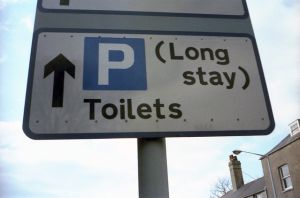Think Twice Before Trying To Increase Customer Engagement
by Robert Bacal
 Note: Customer engagement is one of those words bandied about, often mentioned, but seldom analysed in terms of achieving business goals. In this new series we’ll look at customer engagement as something that “CAN” improve business results, but also can have exactly the opposite effect – in effect costing far more than it adds.
Note: Customer engagement is one of those words bandied about, often mentioned, but seldom analysed in terms of achieving business goals. In this new series we’ll look at customer engagement as something that “CAN” improve business results, but also can have exactly the opposite effect – in effect costing far more than it adds.
These days, the term engagement is so common, you can hardly read anything without coming across at least one mention of it. Of course, there’s “employee engagement” as a term, but there’s also customer engagement. In all cases both are considered to be good things to invest in. Often that’s not the case.
Definitional Problem With Customer Engagement
First, as is also the case with employee engagement, the term customer engagement can mean almost anything. For example, it can refer to how long a person stays on a website. Or how long a customer spends in a store. The problem is that without answering the following questions, we aren’t thinking about engagement in enough detail so we can make business decisions based on it.
The Key Questions
With what (or with whom), are customers “engaging”?
Engagement, in a general sense, has nothing to do with profitability or other business goals. It’s an assumption that, for example, the longer a customer spends on a website, the more likely it is they will make a purchase, or click on an ad. That’s just an assumption, and is often NOT true. In later installments of this series, we’ll give you some clear examples where engagement does not only NOT have a return on investment, but can actually COST business owners — a negative return on investment. So you have to define and think about what customers are actually doing as part of the engagement process you are trying to create.
How Is Increased Customer Engagement Going To Cause Better Business Results?
As above, the assumption is that more customer engagement is better, and that’s simply not the case. Some kinds of “engagement” (interacting with employees or products) can help sell. Some kinds are completely neutral, and have no effect, and some interactions and types of engagement will actually result in worse performance for the company.
In addition, the kinds of engagement that work differ from business type to business type. As you’ll see in some of our later examples, a theme park (think Disneyworld) that has customers standing around, relatively “disengaged”, is going to have serious problems. That’s because a theme park is ALL about engagement, and it’s a reasonable conclusion that if people are not engaging in activities, they are not having a good time, and won’t be back. For theme parks, engagement with the staff, rides, and other features is ESSENTIAL
On the other hand, a retail store that manages to keep customers in store, via access to, let’s say, games, or test driving something, whether it be a car or a television, may or ma not benefit. Some people are tire-kickers, and come in for entertainment only, and aren’t buying, regardless.
At the other end of the scale are situations where increased customer engagement can cost business money. Again, you’ll see examples later in this series, but consider, for now, a fine dining restaurant. Restaurants operate on low profit margins, and many will not make a profit unless they can have serval services per night, and turn over the tables relatively quickly. For many restaurants, if customer engagement means LONGER stays at the table, and less table turnover, the net result is negative.
In short, if you have invested in increased customer engagement, or plan to, you MUST answer at least these two questions. If you don’t, you may discover that your profits drop. Just because customers are “doing something” that’s keeping them in contact with your business, doesn’t mean they are doing the RIGHT THINGS that will increase profit.
Next Part: Examples Of Customer Engagement That Damages Profits

